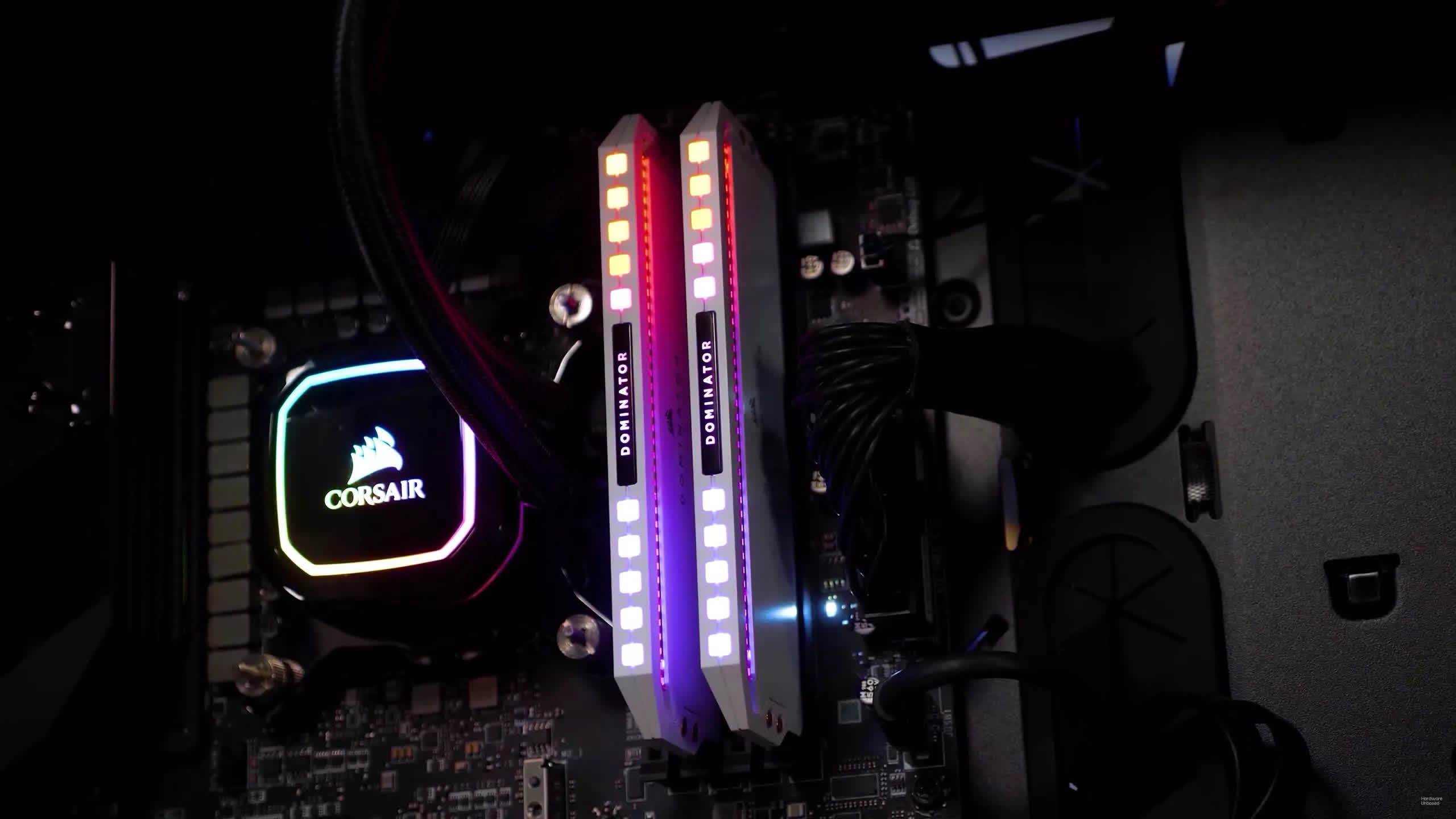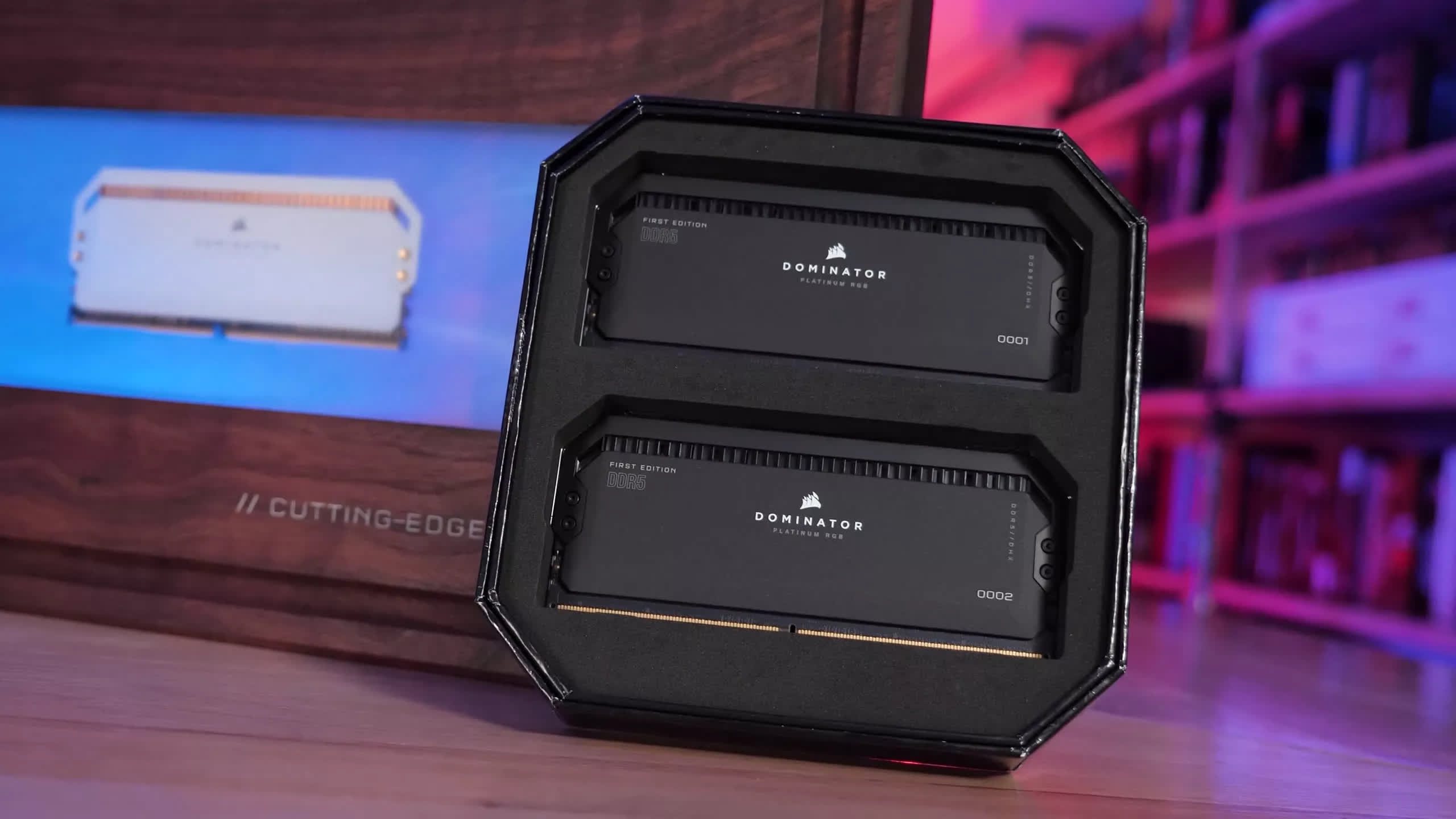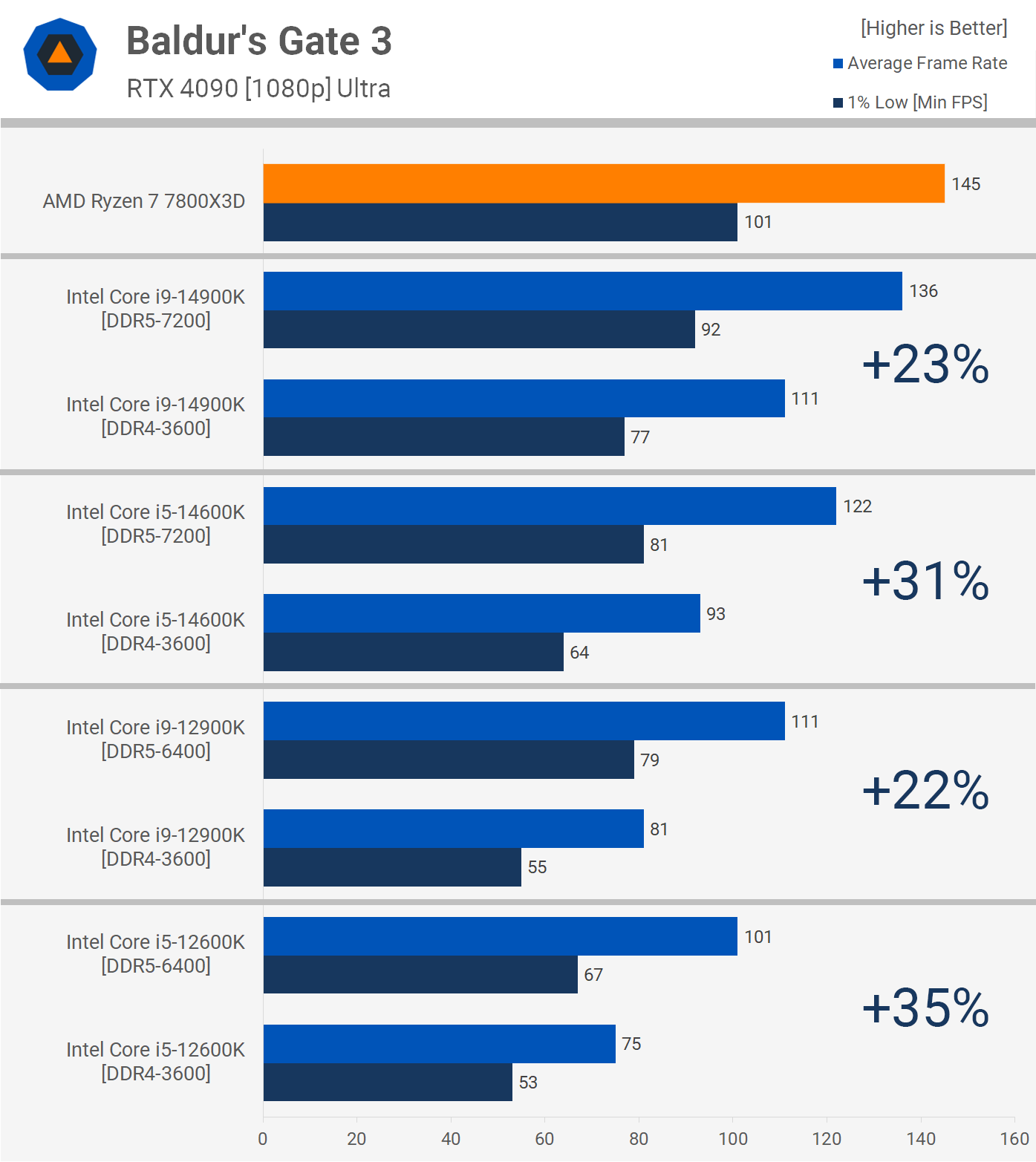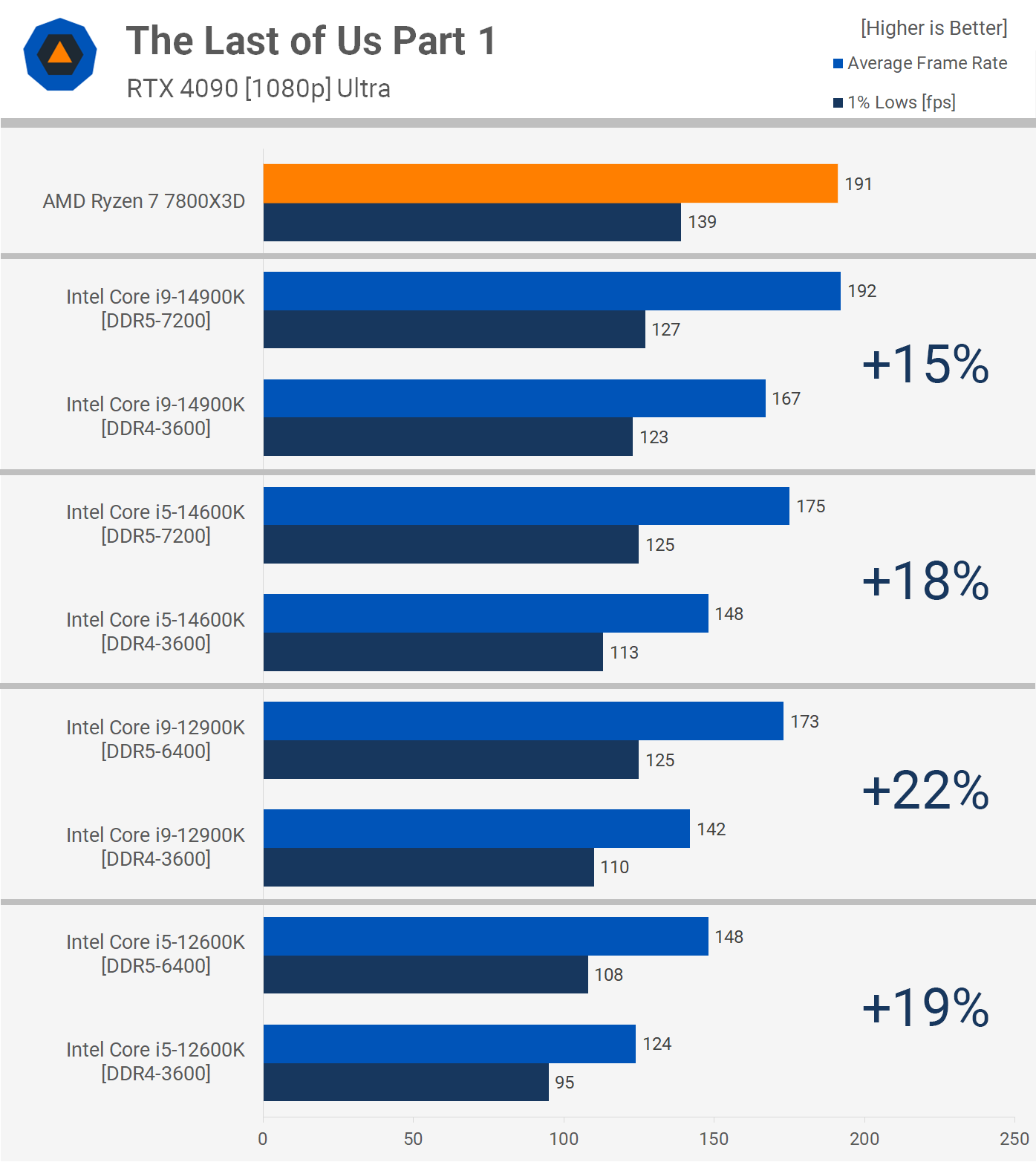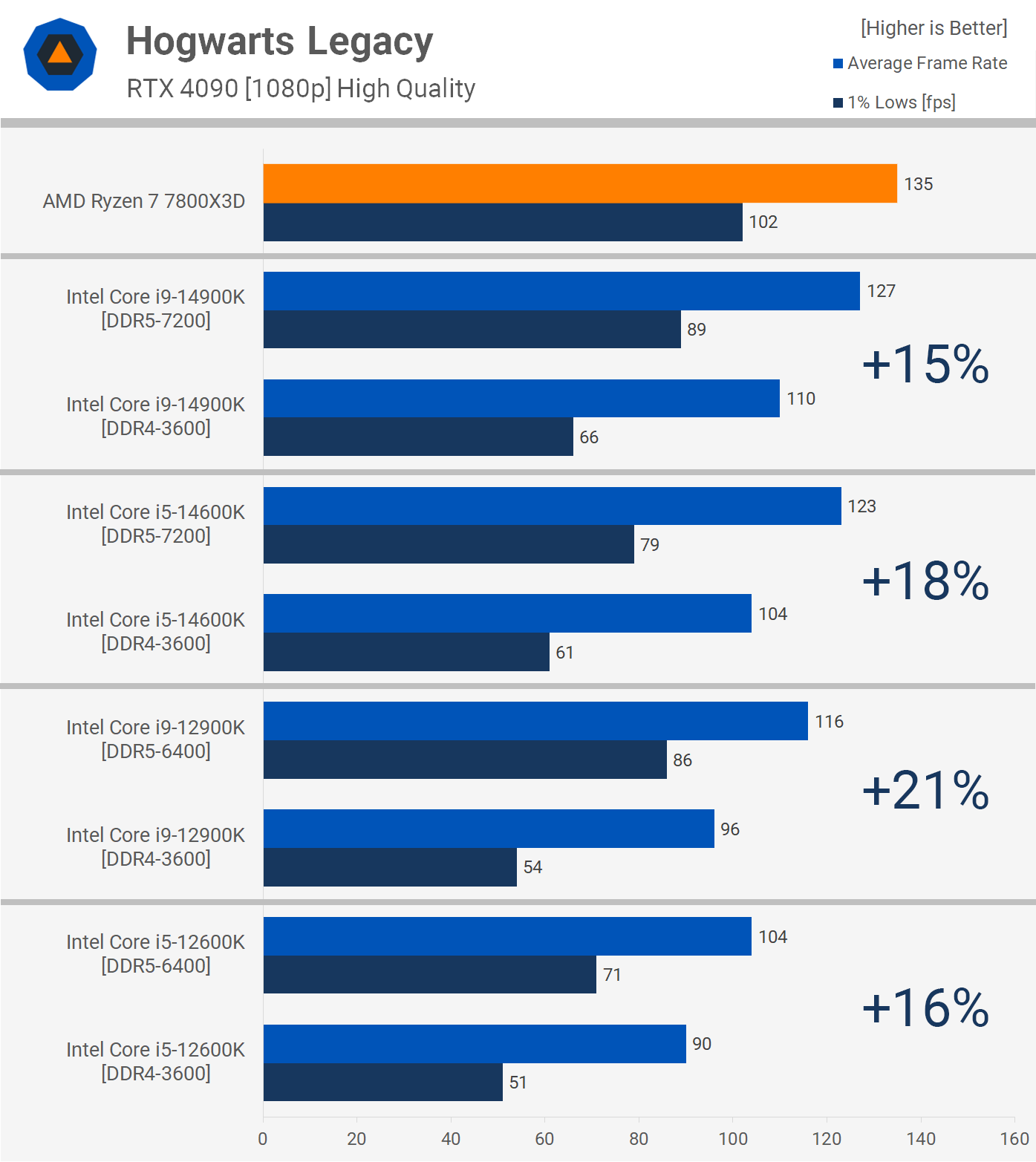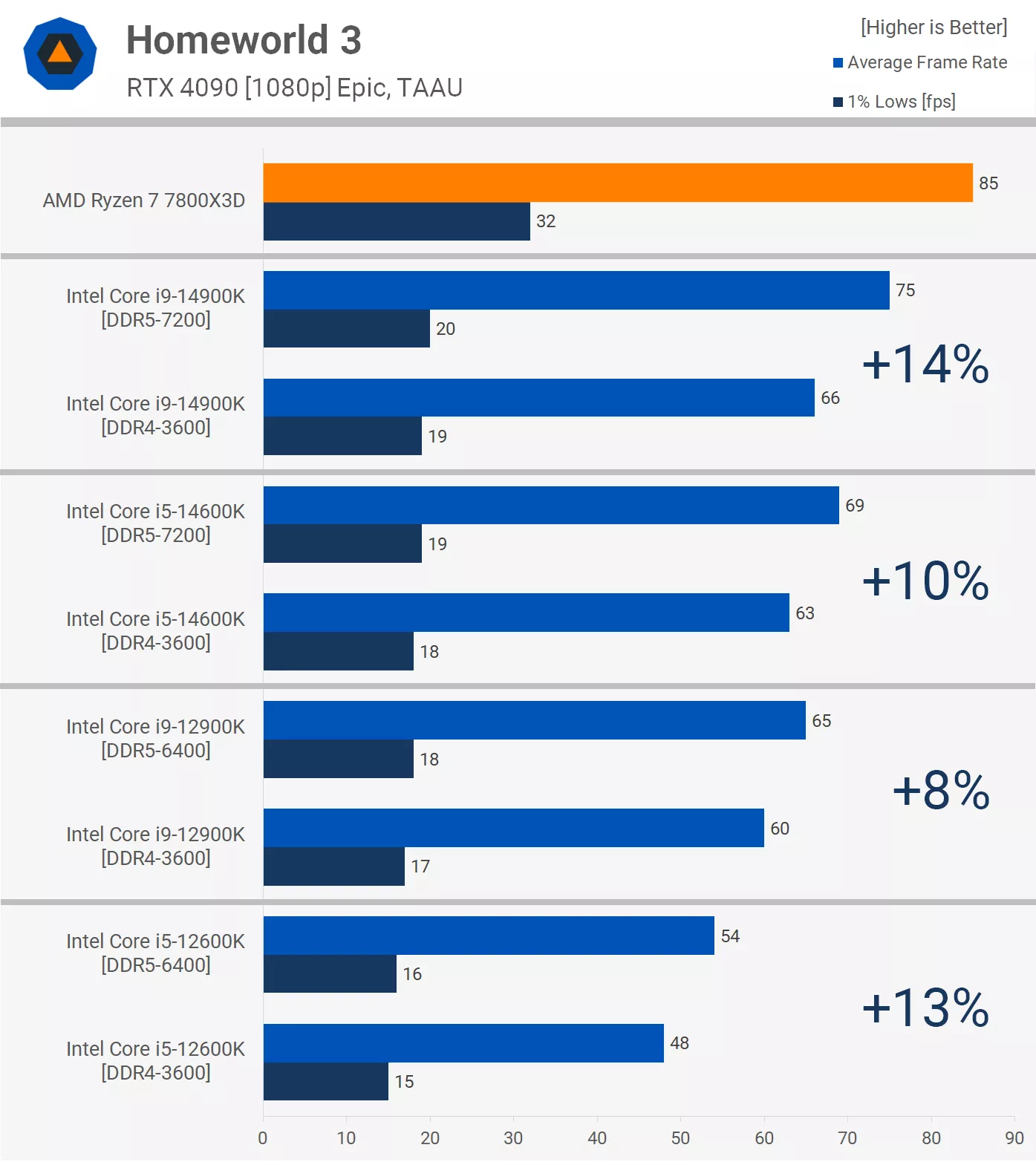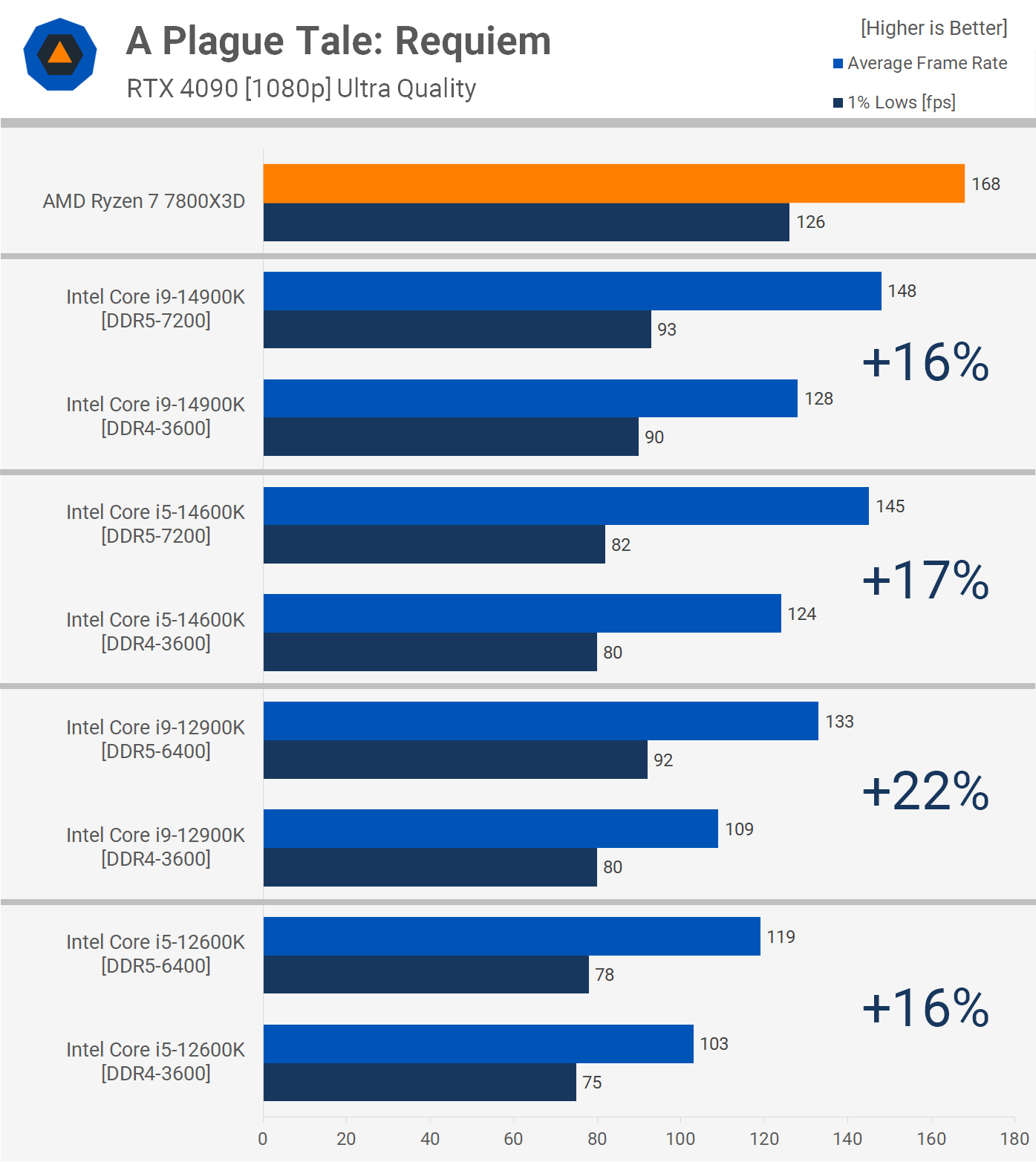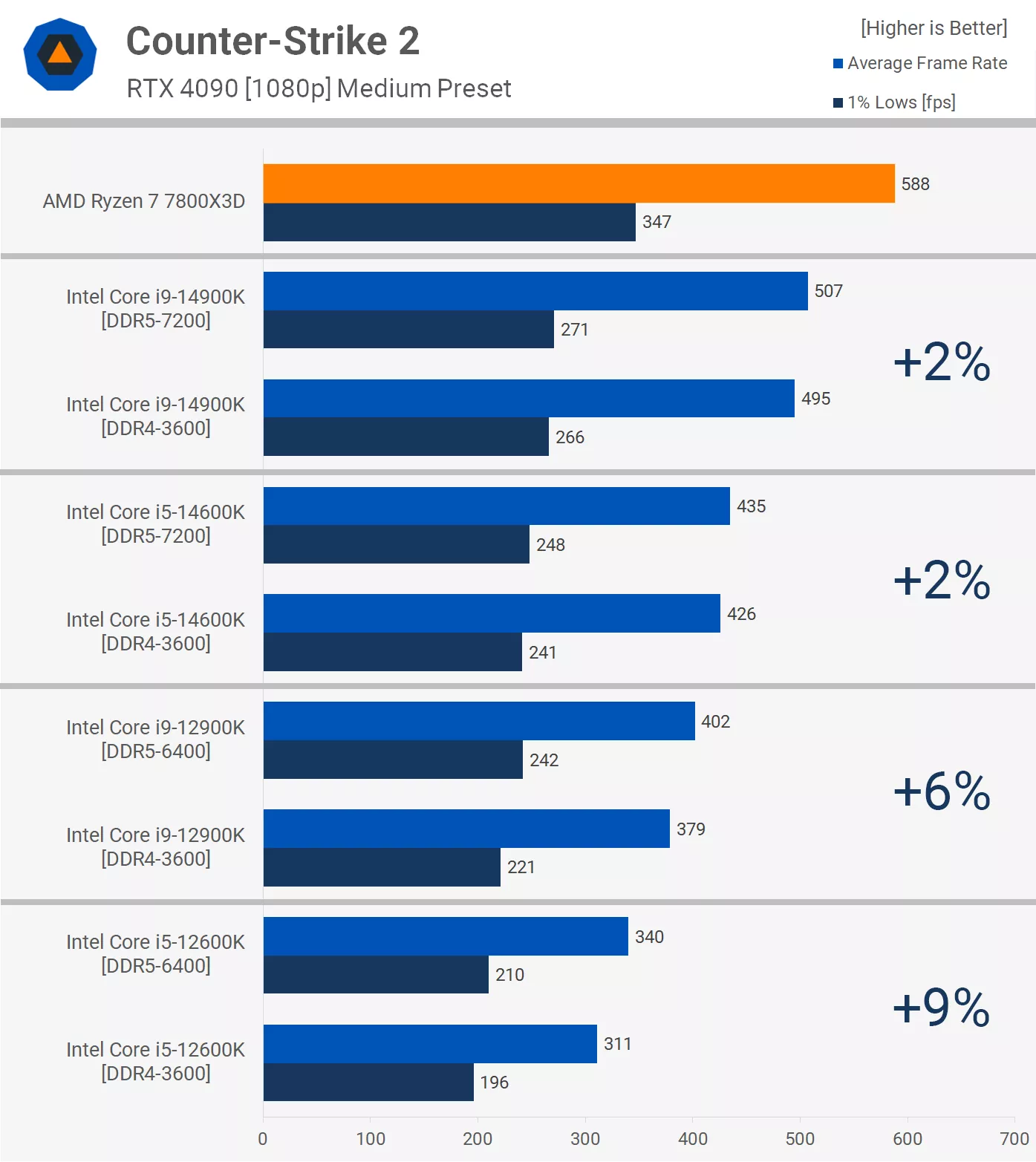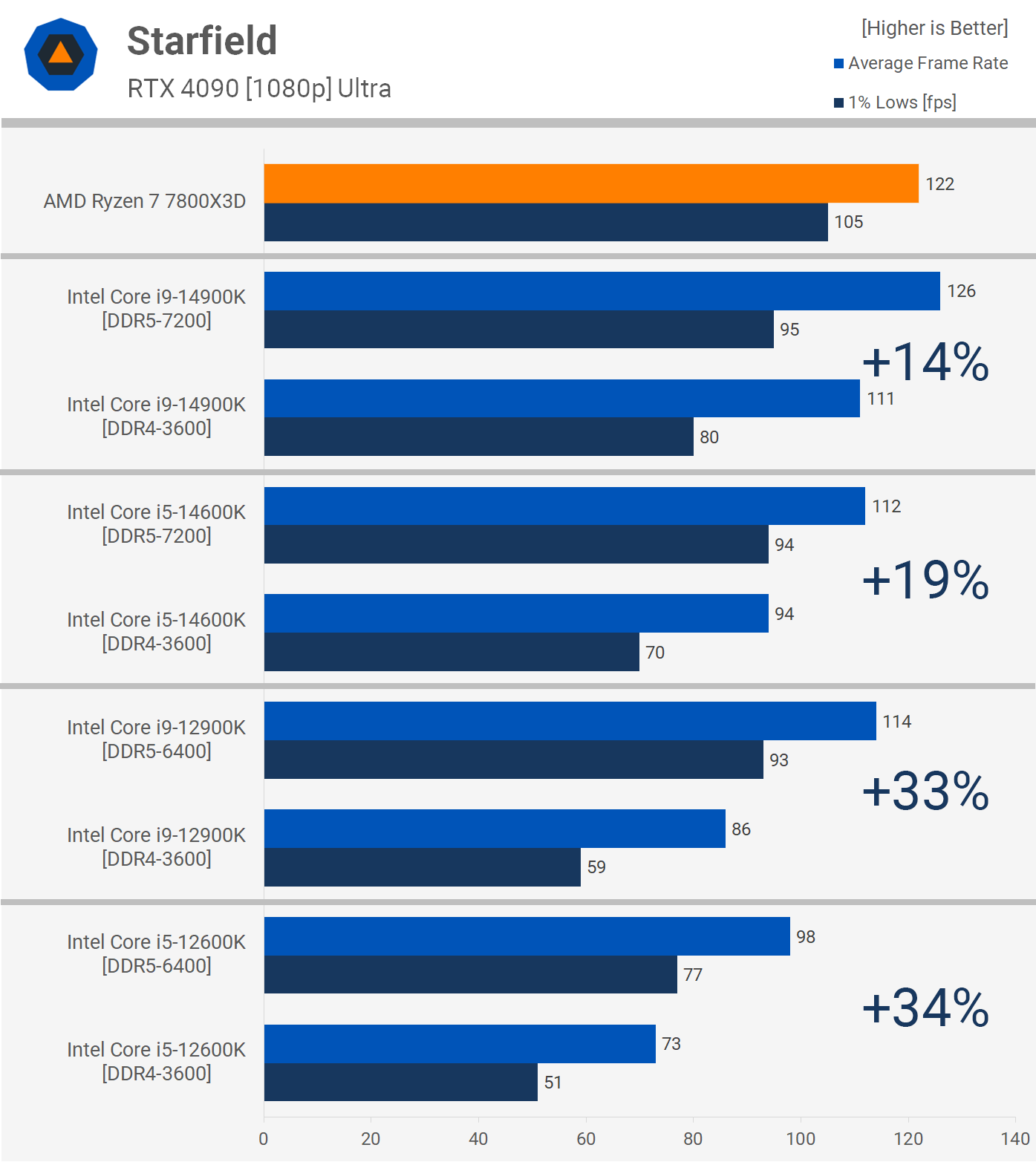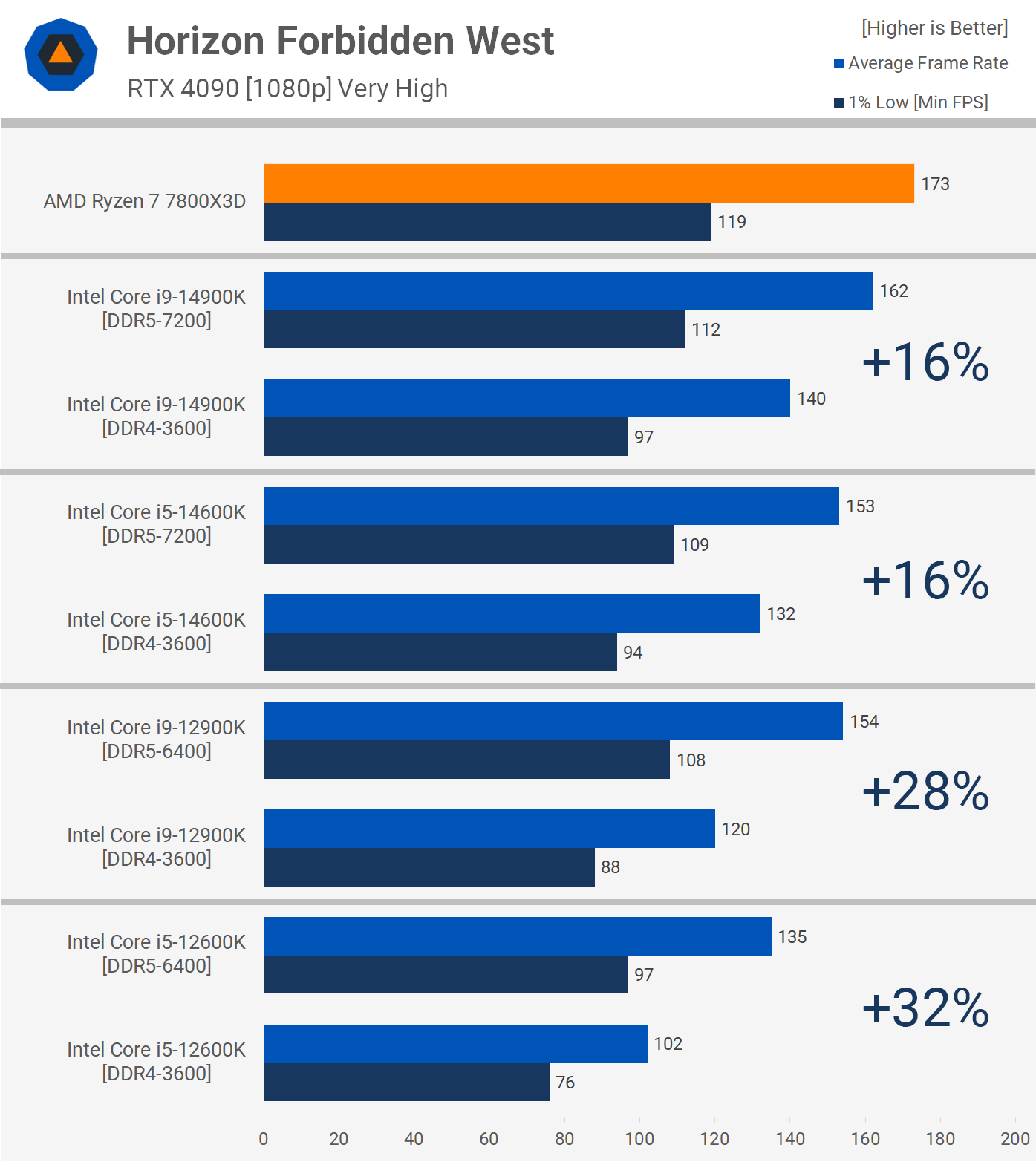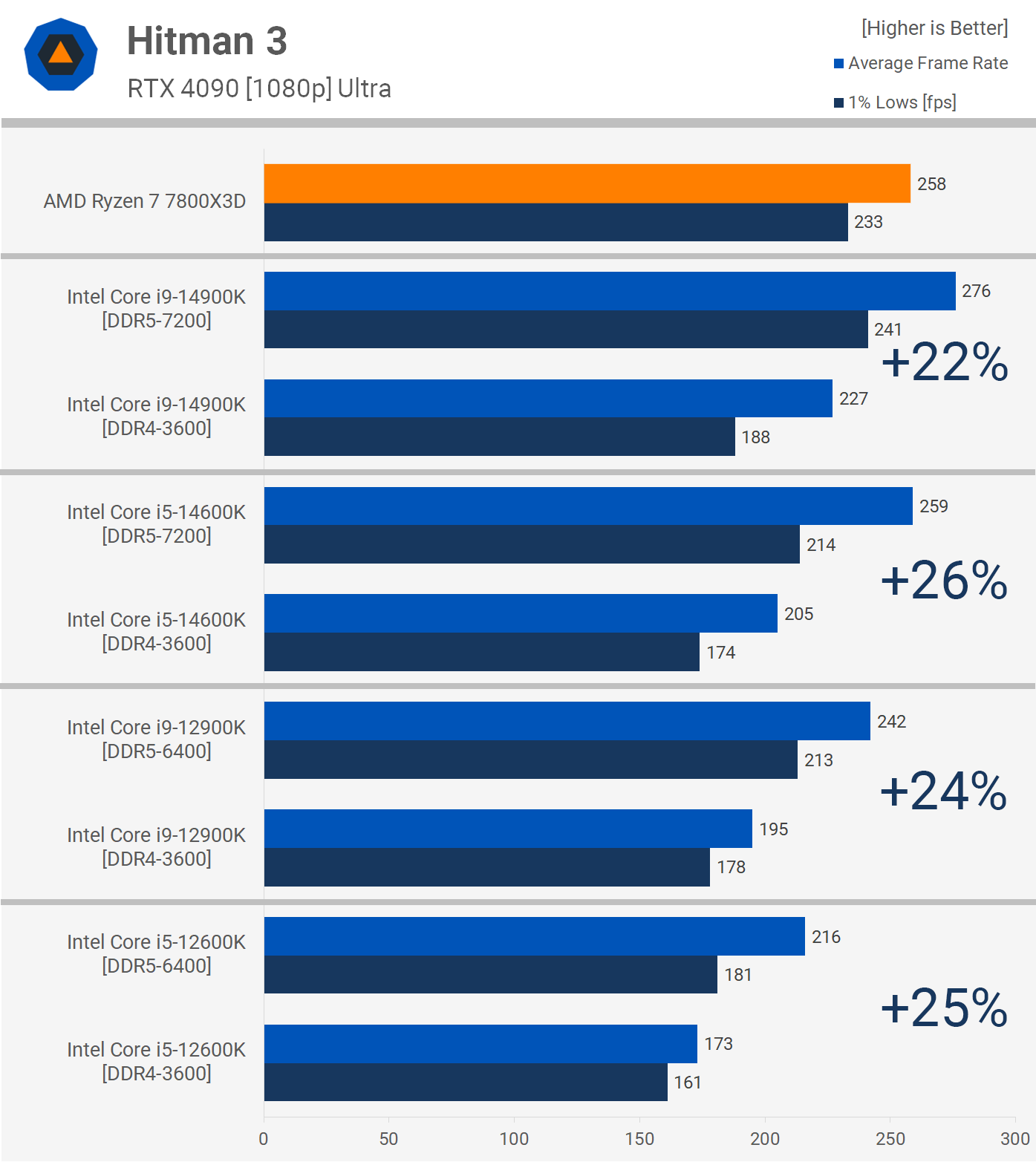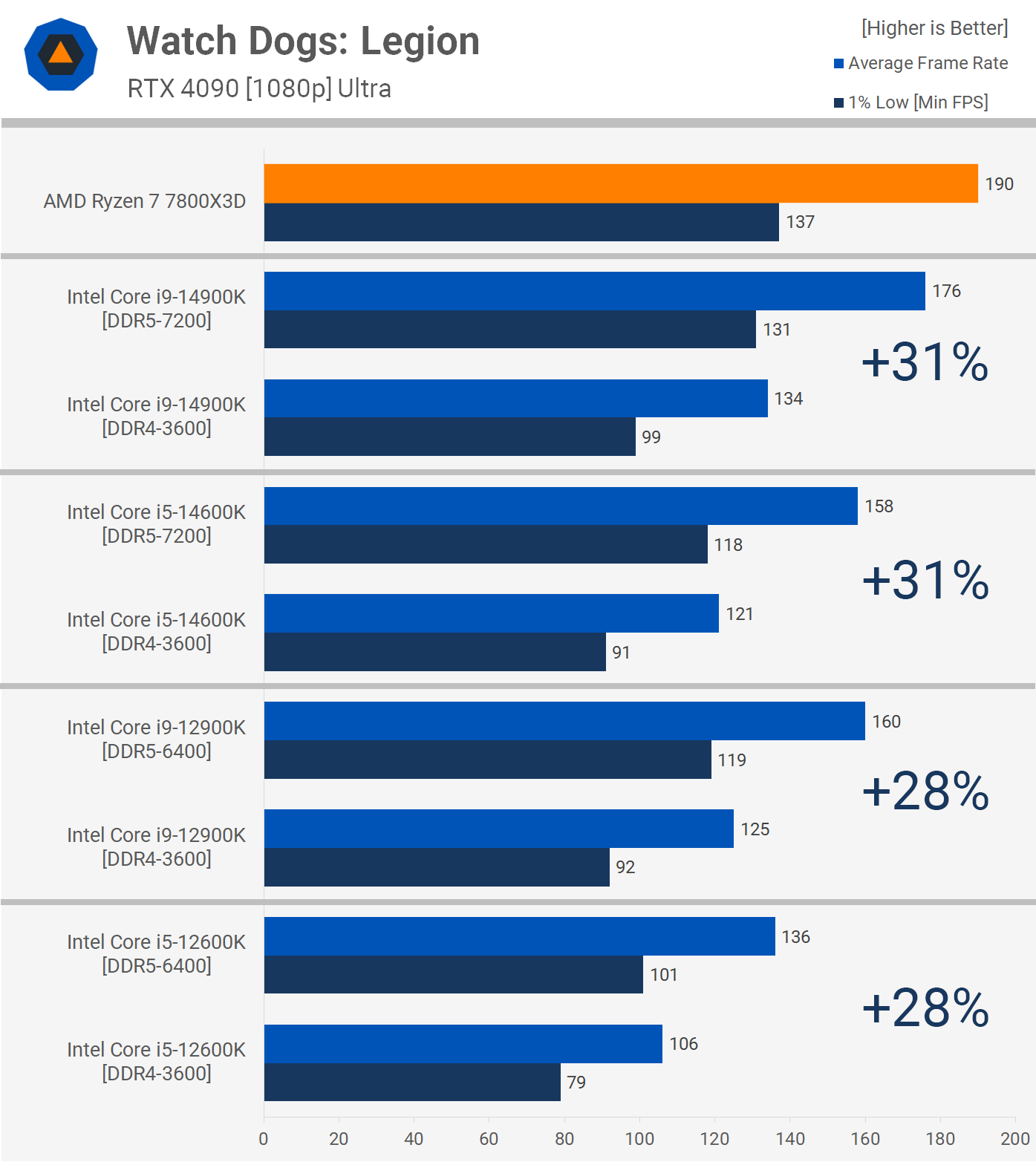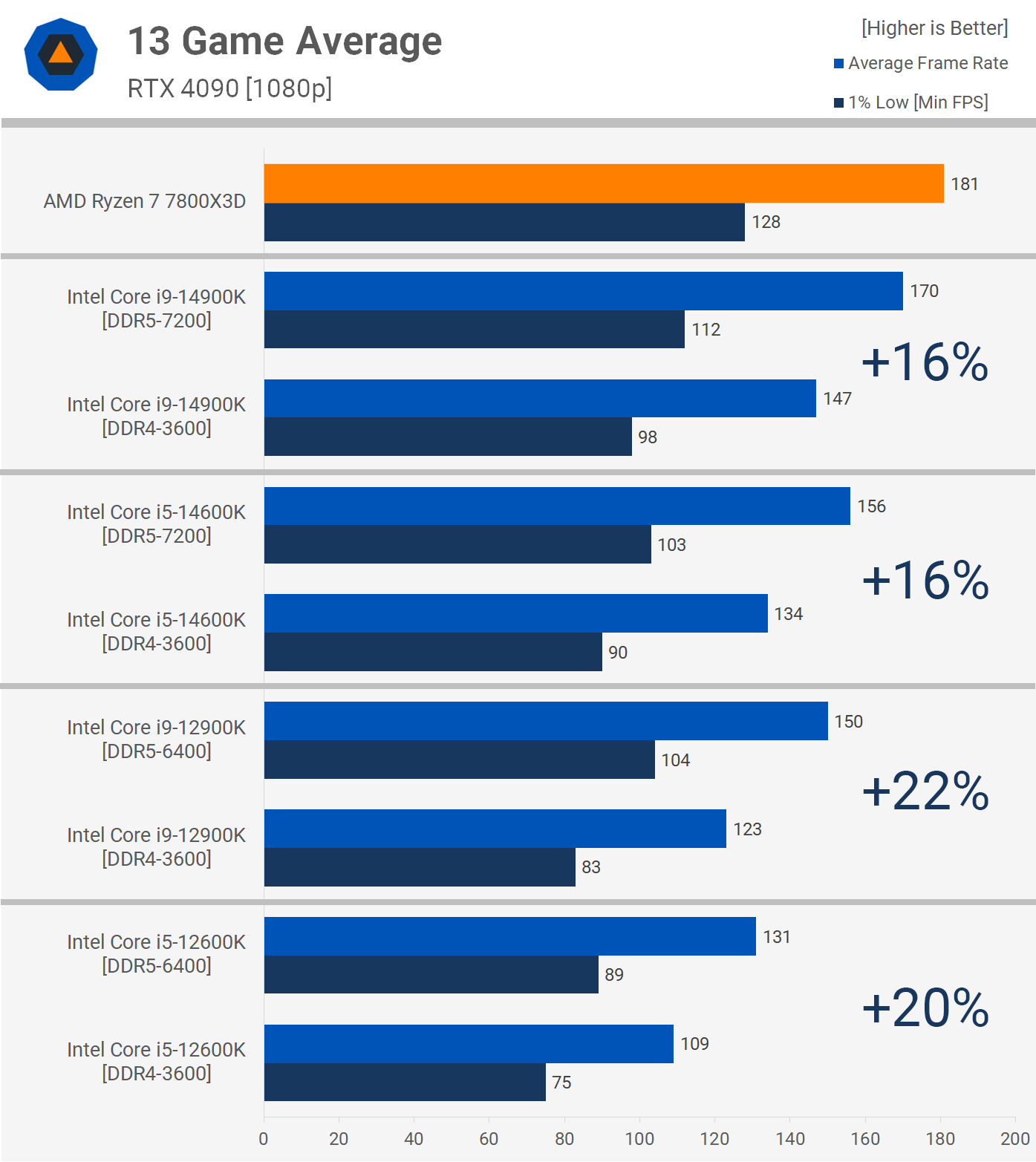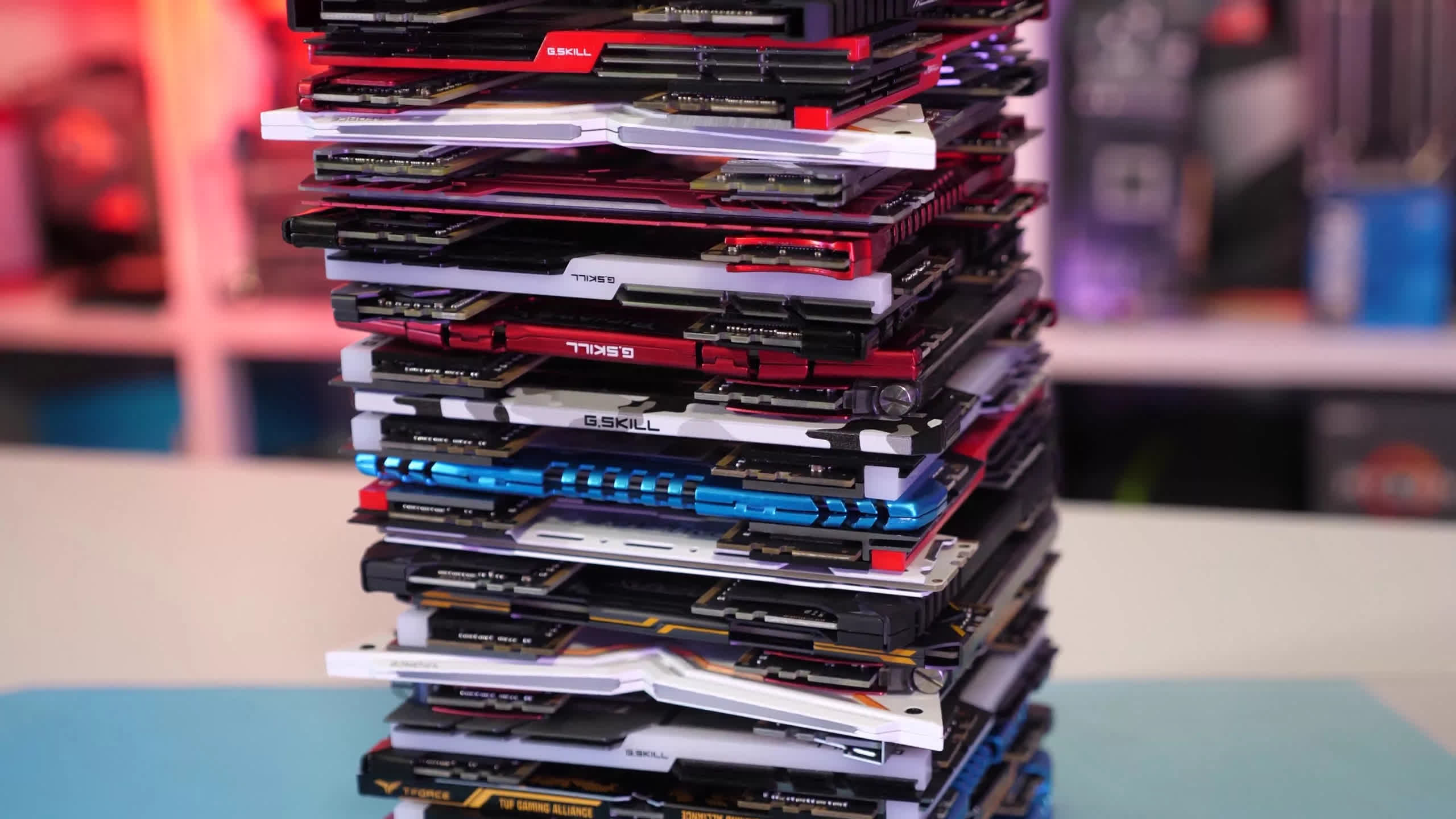In anticipation of the release of AMD Ryzen 9000 processors, set to arrive by the end of the month, we've been working hard on updating all our CPU benchmark data, including application productivity and gaming tests. Last week, we did a recap by testing the previous two CPU generations one last time, just to see where things stand today before the new wave of desktop CPUs hit the market.
On that same note, we noticed a CPU like the Ryzen 5800X3D has gone from approximately 5% slower to about 7% slower than Intel's old 12900K flagship, which can be configured with DDR5 memory. This was evident in our last DDR test using a faster GPU and a different sample of newer PC games.
Which got us thinking, just how much of a benefit is DDR5 memory in modern PC gaming?
The 12900K's ability to utilize faster DDR5 memory possibly hands it a significant memory bandwidth advantage over the 5800X3D in modern games. To find out, we've gone back and re-tested the 14900K, 14600K, 12900K and 12600K, all with DDR4-3600 CL14 memory.
Benchmarks
Baldur's Gate 3
First up, we have Baldur's Gate 3 and here the 14900K saw a 23% performance improvement when using DDR5, while the 13600K saw a much larger 31% improvement. Interestingly, we see similar scaling behavior with the 12th-gen parts: the 12900K was 22% faster using DDR5, while the 12600K was 35% faster. It seems as though the parts with less L3 cache might benefit more from the faster memory, at least in this example.
The Last of Us Part I
Moving on to The Last of Us Part 1, we find that one of the smallest performance uplifts is actually seen with the 14900K, just 15% in this example. The 14600K didn't benefit much more, at 18%. The 12900K saw a 22% boost, and the 12600K a 19% boost. Again, the 12th-gen models enjoyed a bigger boost with DDR5, though only slightly so in this case.
Cyberpunk 2077: Phantom Liberty
The Cyberpunk 2077: Phantom Liberty results are also quite interesting. The 14900K saw only a 16% uplift when using high-frequency DDR5 memory, and while that's still an impressive improvement, it's less than the gain achieved by the 14600K at 21%. The 12900K and 12600K both enjoyed a massive 29% improvement when paired with DDR5 memory.
Hogwarts Legacy
In Hogwarts Legacy the 14900K saw a reasonable 15% improvement when paired with DDR5 memory, though we saw a far more substantial 35% boost to the 1% lows. The 14600K saw similar gains at 18%, while the 12900K's performance was boosted by 21%, and the 12600K saw just a 16% gain.
Assetto Corsa Competizione
Interestingly, although ACC benefits massively from L3 cache performance, system memory doesn't appear to be nearly as important. For example, the 14900K saw the biggest gains here at just 10%. Although DDR5 did offer a performance boost across the board, the uplift was very mild.
Spider-Man Remastered
This time, we haven't benchmarked Spider-Man Remastered with ray tracing enabled, as we have done previously. This change has led to DDR5 offering quite a large performance advantage over DDR4. However, this data is for our updated CPU testing, and the very high preset without RT enabled results in less CPU-limited data.
We still find some interesting results here. The 14th-gen CPUs saw only a 9% improvement with DDR5 under these test conditions, while the 12th-gen models saw an increase ranging from 13% to 22%. The 12900K appeared to be bandwidth-limited with DDR4 memory, as it was just 5% faster than the 12600K. With the faster DDR5 memory, it was 14% faster.
Homeworld 3
Homeworld 3 is a demanding game, especially when the battle heats up. The 1% lows on Intel's LGA1700 processors aren't great, and we see that the difference between DDR4 and DDR5 is minimal. DDR5 offers around a 10% boost to the average frame rate, which is nice, but it doesn't enhance the experience significantly.
A Plague Tale: Requiem
Testing with A Plague Tale: Requiem typically shows around a 16-17% performance boost for DDR5 over DDR4, with the 12900K being the exception, achieving a 22% boost using the higher-clocked DDR5 memory. It was the only CPU to see a decent boost to the 1% lows, with the other parts only seeing a 3-4% improvement.
Counter-Strike 2
As we've found previously, Counter-Strike 2 isn't sensitive to memory performance, producing similar results using DDR4 and DDR5 memory, at least with a 14th-gen processor. The 12900K saw a mild 6% improvement with DDR5, while the 12600K was 9% faster.
Starfield
The Starfield results show similar performance trends to many of the games we've already looked at, with the 12th-gen models receiving a much larger performance boost using DDR5 memory.
The 14900K was 14% faster using DDR5 and the 14600K 19% faster, both very reasonable gains. However, the 12900K and 12600K saw a 33-34% performance uplift when paired with DDR5, which is a massive increase.
Horizon Forbidden West
We see a similar pattern in Horizon Forbidden West. In this example, the 12900K and 12600K both saw a 16% performance uplift when paired with DDR5 memory, which is a nice improvement.
However, the 12900K enjoyed a much more substantial 28% uplift, and the 12600K saw a massive 32% increase. Once again, it's the 12th-gen models that benefit the most from increased memory bandwidth.
Hitman 3
The gains seen when testing with Hitman 3 are consistent across the board, ranging from 22-26% depending on the processor. DDR5 is quite beneficial here, boosting performance by a noteworthy margin.
Watch Dogs: Legion
Finally, we have Watch Dogs: Legion. This is another example where the performance uplift was similar regardless of the CPU used, ranging from 28% with the 12th-gen models to 31% for the 14th-gen CPUs.
DDR4 vs. DDR5: 13 Game Average
Intel's 14th-gen processors see an average boost of 16% in games, which is substantially more than the DDR4-4000 vs DDR5-7200 comparison we did last year with the 14900K. However, that comparison featured 21 games with faster DDR4 memory, and many of the games were different or used different test methods, as was the case with Baldur's Gate 3, for example.
Other noteworthy changes between tests include Intel's updated power settings. Previously, we were testing without any power limits, whereas now we use the Intel Extreme profile. So, a 16% improvement on average is quite substantial.
We saw an even larger 20-22% gain for the 12th-gen Core parts. This may be due to the larger L2 and L3 cache capacities of the 13th and 14th-gen Raptor Lake parts, making them less sensitive to memory performance.
It's also clear that newer games are more memory demanding, as the 12900K was only 10% faster when paired with DDR5 memory in our earlier testing, similar to what was seen in the 5800X3D review.
The gap between DDR4 and DDR5 memory continues to widen as games become increasingly demanding. This is to be expected, and really, with the exception of AMD's aging AM4 platform, it doesn't make sense to buy DDR4 anymore. For new system builders, it hasn't made sense for over a year now.
Intel is about to retire its LGA1700 platform, and the next-generation Arrow Lake architecture will drop DDR4 support entirely, moving to DDR5 exclusively, just as AMD did with AM5. So, while we can still use 12th, 13th, and 14th-gen CPUs to track how DDR4 and DDR5 compare in future games, it's more for science than it is relevant buying information.
Likewise, we can continue to compare the 5800X and 5800X3D in future games, though we don't expect much to change there as it hasn't to date.
